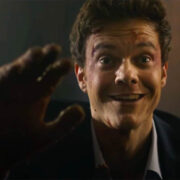Horrific Inquiry: THE STEPFATHER (1987)
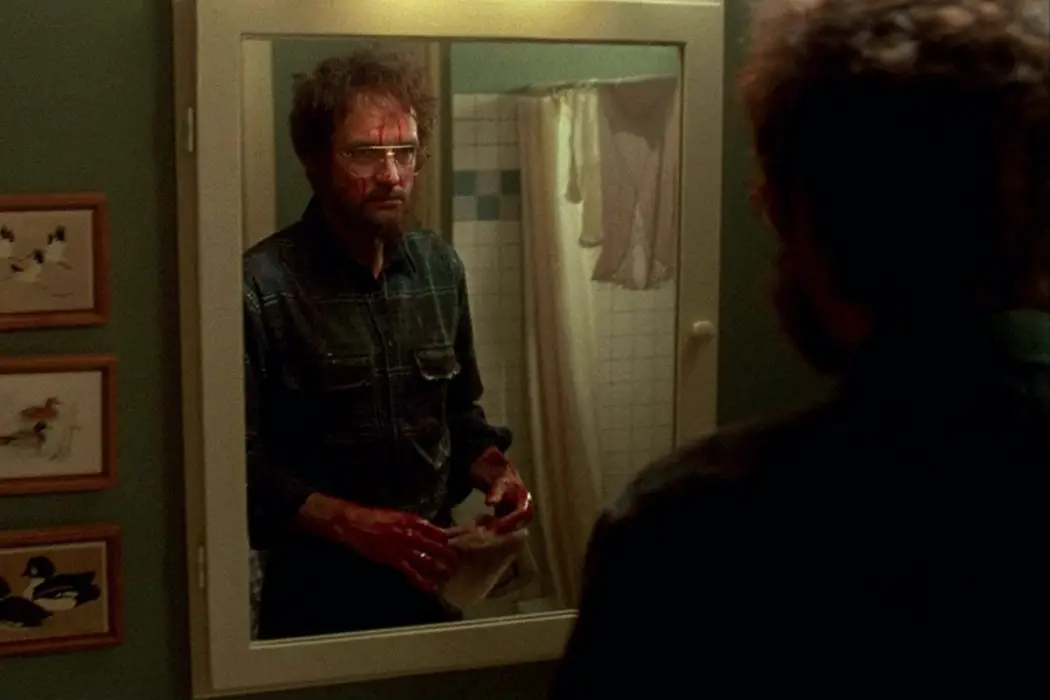
Stephanie Archer is 39 year old film fanatic living in…
Welcome back to the scariest, and at times goriest, column here at Film Inquiry: Horrific Inquiry. Twice a month, I will be tackling all things horror, bringing two films back into the spotlight to terrify and frighten once more. And occasionally looking at those that could have pushed the envelope further. Join us as we dive deep into the heart of horror, but warning, there will be spoilers.
“Who am I here?” – The Stepfather
Father’s Day – a day to celebrate Dad. But here at Horrific Inquiry, it is the perfect time to celebrate the Dads of horror. And what better film to revisit than Joseph Ruben’s 1987 cult classic The StepFather.
The 80s and a Bloodbath
As The Stepfather begins, it is unmistakably an 80s horror film. From its visual quality to its score, it is a time capsule all its own. As the film time travels us back to the 1980s, viewers find themselves at what appears to be the end, a man stepping in front of a mirror drenched in blood. This scene will be one of the bloodiest moments in The Stepfather, yet that is not what audiences will be focusing on. Rather, on the meticulous and skilled nature of this man’s movements and care for not only cleaning himself up, but seemingly covering up evidence.
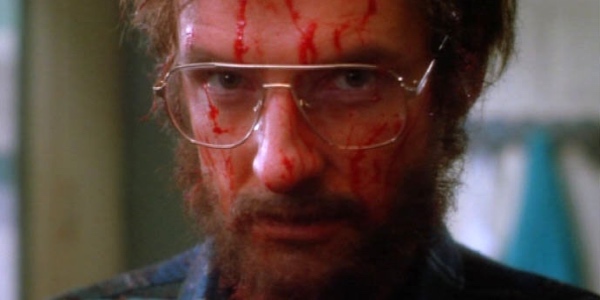
Emerging from the bathroom, he makes his way through the home, picking up a small toy boat and putting it away before descending the stairs. There is an eerie and foreboding feeling as he puts the toy away, the reflection of blood still fresh in the minds of viewers. As the man reaches the bottom of the stairs, and fears that have been culminating are confirmed, the living room behind him holds the gruesome scene of a murdered family. With the blood drenched introduction and the subsequent upward angle shots, the ominous nature to the unknown man is confirmed. He is the killer.
As he exits the home, whistling as he makes his way down the traditional suburban neighborhood, it is clear that this is not his first time. He has gotten away with it before, and he will get away with this one as well. Any remaining doubts are swept away as he throws the suitcase with the last of his belongings overboard, ready to make a fresh start. What is intriguing about this opening is its lack of dialogue and character interactions. It is a visually built construct of the character of Jerry (Terry O’Quinn), letting the action and nonverbal on the screen compose the ominous and foreboding nature of the subsequent film that follows.
As the opening sequence pulls away, The Stepfather picks up one year later. Stephanie (Jill Schoelen) makes her way home, being attacked by a pile of leaves her mother Susan (Shelley Hack) throws at her. As the two playfully throw leaves at one another, there is a sense of a strong and bonded relationship between mother and daughter, setting up the difficulties for Jerry to break through early on.
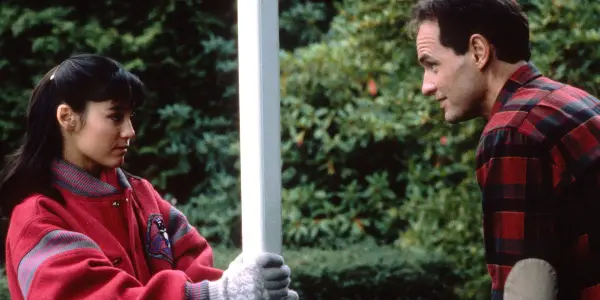
As Susan remarks that Jerry is home, we see the joyful look on Stephanie melt away. Viewers quickly come to understood that Jerry and Susan over the last year have married, but that his relationship with Stephanie has been far from successful. As he gifts her with a puppy, one of the most innocence gestures, contrasted by the devious nature behind its meaning of family, Stephanie shuns Jerry’s shows of affection, accepting the dog yet recoiling as he reaches out to her.
A Supporting Success
While The Stepfather is not your standout slasher, running more along the lines of a cult classic, the film is smart enough to know that it can not have a functioning narrative with just Jerry, Susan, and Stephanie. For it to succeed, it would require varying forces that can work their way both physically and mentally into the landscape of the perfect family Jerry is attempting to craft. The first to enter the picture is Stephanie’s psychiatrist, Dr. Bondurant (Charles Lanyer).
At first, he seems your run-of-the-mill shrink, sitting at his desk and addressing Stephanie as a patient. Yet as the film progresses, Dr. Bondurant begins to acquire a more fatherly friendship basis to his relationship with Stephanie. He retains his professionalism and objectivity while seemingly breaking into a more relaxed and open environment around Stephanie. While it begins in more of a relaxed setting in his office, it breaks free of a closed setting, Dr. Bondurant attempting to speak with Jerry regarding Stephanie’s desire to go to boarding school – eventually meeting him in person under the guise of house hunting.
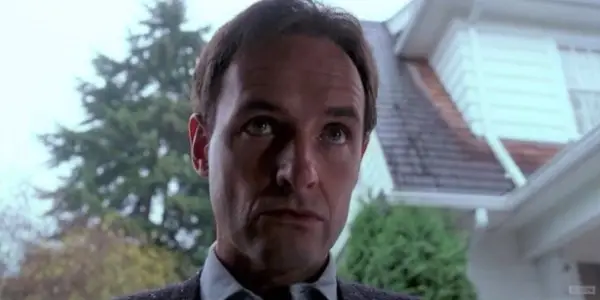
Dr. Bondurant is important to the film for not only the expansion of the narrative and unraveling of Jerry’s psychosis but for the representation that sometimes children see what we can not. Too often, this is a true-life horror, children calling out for help for the wrongs that have been committed against them, only for their cries to fall on deaf ears. While Stephanie speaks of her fear of Jerry, later speaking to an incident that happened in the basement, Dr. Bondurant does not chalk it up to trauma from the loss of her father or the subsequent feeling of replacement that Jerry could personify. Rather, he listens to her – and he acts.
But Dr. Bondurant is not the only important supporting character The Stepfather brings into the fold. As the early portion of the film progresses, the brother of Jerry’s previous victim is introduced – Jim Ogilvie (Stephen Shelley). While meeting with a reporter at the film’s opening crime scene, Jim implores him to print a follow-up article with the picture of the man his sister was married to. Jim has theorized that the killer could not have gone far, believing that before he murdered his sister, he had already begun his new life. And while his theory proves itself sound, his inclusion is not as much. Jim brings little to the film other than a body count and explanatory exposition. The audience is smart enough to piece together what is happening, Jim is there as a form of security that nothing goes a miss.
Lastly, the film gives us a poorly developed boyfriend in Paul Baker (Jeff Schultz), his inclusion merely a tool to further Jerry’s psychosis and degrading mental stability. As Stephanie and Paul are caught kissing one night, Jerry appears, accusing Paul of attempting to rape his daughter. While his allegations are wildly off course, this moment is more for Jerry than anything else. It is the moment in The Stepfather that proves Jerry will never succeed in his quest. The perfect family has a husband, a wife, a child, and a dog. When the child grows up, attend college, live their life and get married, they have broken from the “perfect family”. The unit has been fractured, the order has been broken. It is in this moment that viewers come to understand that Jerry’s “families” are not doomed to fail because they will disappoint him, but because they will grow and eventually break away. The end of each of Jerry’s quests is an inevitability.
Conclusion
The Stepfather is not the knock-out it wants to be, at times feeling more like a made-for-TV movie than a box office slasher. And it has not grown well with time. Yet, there is a horror within its framework, Terry O’Quinn shining as Jerry, putting the psycho in psychotic. And at its core, it is a psychological thriller that shakes our ability to trust and to welcome, leaving us to question the true nature of those around us.
Happy Father’s Day!
Have you seen The Stepfather? What did you think? Let us know in the comments below!
Watch The Stepfather
Does content like this matter to you?
Become a Member and support film journalism. Unlock access to all of Film Inquiry`s great articles. Join a community of like-minded readers who are passionate about cinema - get access to our private members Network, give back to independent filmmakers, and more.









